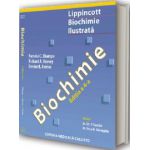The Molecules of Life: Physical and Chemical Principles

Price: 294,00 lei
Availability: in supplier's stock
Author: John Kuriyan, Boyana Konforti, David Wemmer
ISBN: 9780815341888
Publisher: Garland Science
Publishing Year: 2012
Pages: 1032
Category: BIOCHEMISTRY
DESCRIPTION
The field of biochemistry is entering an exciting era in which genomic information is being integrated into molecular-level descriptions of the physical processes that make life possible.
The Molecules of Life is a new textbook that provides an integrated physical and biochemical foundation for undergraduate students majoring in biology or health sciences. This new generation of molecular biologists and biochemists will harness the tools and insights of physics and chemistry to exploit the emergence of genomics and systems-level information in biology, and will shape the future of medicine.
The book integrates fundamental concepts in thermodynamics and kinetics with an introduction to biological mechanism at the level of molecular structure. The central theme is that the ways in which proteins, DNA, and RNA work together in a cell are connected intimately to the structures of these biological macromolecules. The structures, in turn, depend on interactions between the atoms in these molecules, and on the interplay between energy and entropy, which results in the remarkable ability of biological systems to self-assemble and control their own replication.
The Molecules of Life deepens our understanding of how life functions by illuminating the physical principles underpinning many complex biological phenomena, including how nerves transmit signals, the actions of chaperones in protein folding, and how polymerases and ribosomes achieve high fidelity.
Part I. Biological Molecules
1. From Genes to RNA to Proteins
2. Nucleic Acid Structure
3. Glycans and Lipids
4. Protein Structure
5. Evolutionary Variation in Proteins
Part II. Energy and Entropy
6. Energy and Intermolecular Forces
7. Entropy
8. Linking Energy and Entropy
Part III. Free Energy
9. Free Energy
10. Chemical Potential and the Drive to Equilibrium
11. Voltages and Free Energy
Part IV. Molecular Interactions
12. Molecular Recognition
13. Specificity of Macromolecular Recognition
14. Allostery
Part V. Kinetics and Catalysis
15. Rates of Molecular Processes
16. Principles of Enzyme Catalysis
17. Diffusion and Transport
Part VI. Assembly and Activity
18. Folding
19. Fidelity in DNA and Protein Synthesis
The Molecules of Life is a new textbook that provides an integrated physical and biochemical foundation for undergraduate students majoring in biology or health sciences. This new generation of molecular biologists and biochemists will harness the tools and insights of physics and chemistry to exploit the emergence of genomics and systems-level information in biology, and will shape the future of medicine.
The book integrates fundamental concepts in thermodynamics and kinetics with an introduction to biological mechanism at the level of molecular structure. The central theme is that the ways in which proteins, DNA, and RNA work together in a cell are connected intimately to the structures of these biological macromolecules. The structures, in turn, depend on interactions between the atoms in these molecules, and on the interplay between energy and entropy, which results in the remarkable ability of biological systems to self-assemble and control their own replication.
The Molecules of Life deepens our understanding of how life functions by illuminating the physical principles underpinning many complex biological phenomena, including how nerves transmit signals, the actions of chaperones in protein folding, and how polymerases and ribosomes achieve high fidelity.
Part I. Biological Molecules
1. From Genes to RNA to Proteins
2. Nucleic Acid Structure
3. Glycans and Lipids
4. Protein Structure
5. Evolutionary Variation in Proteins
Part II. Energy and Entropy
6. Energy and Intermolecular Forces
7. Entropy
8. Linking Energy and Entropy
Part III. Free Energy
9. Free Energy
10. Chemical Potential and the Drive to Equilibrium
11. Voltages and Free Energy
Part IV. Molecular Interactions
12. Molecular Recognition
13. Specificity of Macromolecular Recognition
14. Allostery
Part V. Kinetics and Catalysis
15. Rates of Molecular Processes
16. Principles of Enzyme Catalysis
17. Diffusion and Transport
Part VI. Assembly and Activity
18. Folding
19. Fidelity in DNA and Protein Synthesis
Book categories
-Special order
-Publishers
-Promo
-Callisto Publications
-New books
-Promotions
-- 144,38 leiMRP: 262,50 lei
- 207,90 leiMRP: 231,00 lei
- 1323,00 leiMRP: 1470,00 lei

















OUR VISITORS OPINIONS